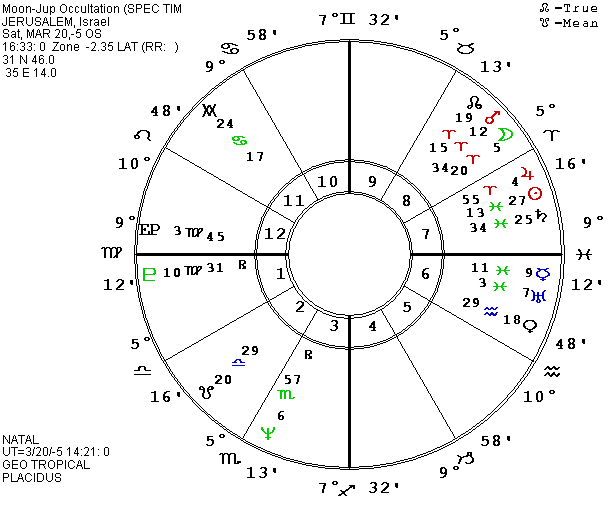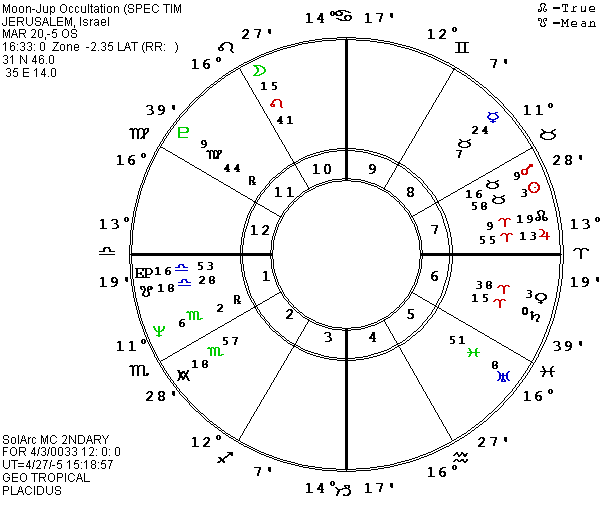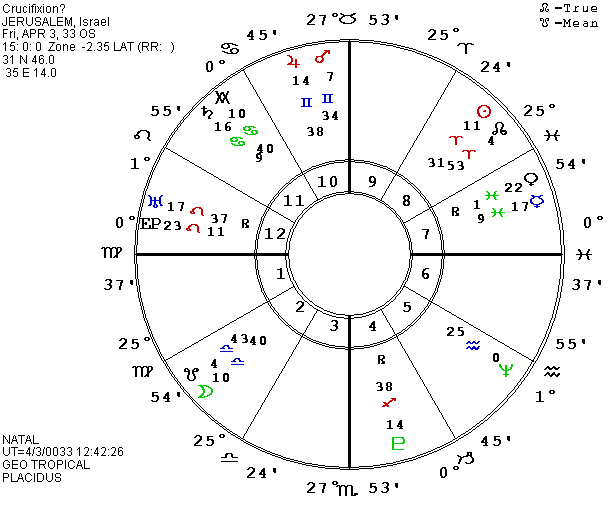Another Christmas Theory
Zip Dobyns
In past issues of The Mutable Dilemma we have presented two different astronomical theories about Matthew’s story of the astrologers who were led by a “star” to come to Palestine to pay homage to a new-born “king.” Such speculations are a perennial feature before Christmas, and a new theory is offered in the January 1992 issue of Sky and Telescope magazine (which reaches subscribers in early December), so we might as well add it to our collection. The article is titled “The Coins of Antioch” and the author, Michael R Molnar, is an astronomer at Rutgers University. Molnar is a student of ancient coins and has more knowledge of ancient astrological beliefs than most astronomers.
Molnar describes coins from the early first century A.D. in the city of Antioch in what is now southern Turkey. One side depicts the Aries ram with a star or with a star and a crescent moon. The other side was commonly an image of Zeus (Jupiter). The use of the ram started when Antioch became the capital of a newly expanded province of Syria that incorporated Judea, Samaria, and Idumaea in 6 A.D. The coins were issued as early as 13 or 14 A.D. by Caecilius Silanus, Syria’s legate from 11 to 17. Molnar suggests that the coins refer to the annexation because Aries is an astrological symbol for Judea, among other places. The ram is looking back at a star. A star could be a mint mark on Roman coins, or a generalized allusion to the heavens or to celestial deities. But in this case, Molnar believes that it represents a real planetary alignment—a spectacular conjunction of Jupiter and Mercury in Aries in A.D. 7 on the morning of April 18 (Julian calendar). Another astrological coin was issued in Antioch between 55 and 57 A.D. showing Tyche, Antioch’s patron goddess of fortune on one side and a ram with a star and a crescent moon on the other side. The coin was minted after a period of bitter conflict between Jews and Samaritans and Molnar thinks it represents a lunar occultation of Venus in Aries on the morning of April 27, 51 A.D. Theoretically, Quadratus, the Syrian legate who issued the coin, hoped that the Venus-Moon close conjunction was a harbinger of peace and harmony in his region.
Molnar quotes Ptolemy in linking Mars and Aries to the inhabitants of Coele-Syria, Idumaea, and Judea, describing these people as in general “bold, godless, and scheming.” In general, the Greeks and Romans considered the monotheists of Judea to be godless because they rejected the Greek, Roman and Egyptian pantheons. Syria proper, as distinct from Coele-Syria in the south, was associated with Scorpio. Molnar also emphasizes the importance of occultations in ancient astrology when planets are conjunct in latitude as well as in longitude so they are seen as a single entity. He writes that occultations when the moon covers a planet are relatively rare and were considered astrologically omnipotent, especially among the people of the Middle East. The moon supposedly magnified the astrological effect of the planet. Though Mars and Saturn were malefics and thus harbingers of trouble, Mars as ruler of Judea and in its own sign could be the occulted planet or at least involved in the configuration. But Jupiter, the king of the gods and signifying success and dominion, would be especially appropriate. Molnar thinks that Venus (peace and harmony) and Mercury (trade and negotiations) are less relevant. Based on this astrological theorizing, Molnar thinks that ancient astrologers might interpret a Jupiter-Moon occultation in Aries with Mars in the same sign as a key to the coming reign of a new king. Also, according to the Bible account, such an occultation should occur twice within a relatively short time period.
Molnar took the interval between the tax (census) proclamation of Augustus Caesar presumably issued in 8 B.C. and the death of Herod which is thought to have occurred in 4 B.C. and did a computer search for occultations. He found that on March 20, 6 B.C. one minute after sunset in Jerusalem, an 18-hour-old Moon occulted Jupiter in Aries. The sky would have been bright at the beginning but the Moon was still covering Jupiter at the end of official twilight, Jupiter emerged five minutes later, and both bodies set five minutes after that. Mars was also in Aries at the time, about 7 degrees above Moon-Jupiter. Molnar says the configuration would not have been noticed by ordinary people, but astrologers would have known in advance that it was coming and would have been watching for it. And even if a configuration was not visible, the astrologers could have calculated its occurrence and interpreted its meaning. Molnar interprets Ptolemy’s writing as emphasizing the importance of whether a configuration was above or below the horizon. Whether or not it was visible did not alter its potency. Neither of the occultations represented on the two coins described above were visible, but they held important meanings for the people of the time. This 6 B.C. occultation was only above the horizon in a small area of the Middle East west of longitude 43 east and below latitude 34 north. In most of the Mesopotamian cities, the event took place after Moonset.
Moreover, an even more rare event followed—a second Moon occultation of Jupiter in Aries on April 17, 6 B.C., only a month after the first one. This one occurred just after local noon in Judea so could not be seen but astrologers would have calculated it. Molnar connects this second event with Matthew saying that after the astrologers had talked to Herod, the “star” was again seen. Molnar thinks that the astrologers might have come from a near-by region if they traveled to Jerusalem during the month between the two occultations, but astrologers calculate important configurations many years in advance, and they could have begun their journey well ahead of the crucial first occultation.

Of course, the next thing a modern astrologer does is to calculate a chart for March 20, 6 B.C. Since the occultation lasted for several hours (if we consider it “astrologically exact” as long as the Moon is within a one-degree orb on both sides of Jupiter), we still have considerable leeway to try rectification to produce a reasonable chart. A very limited amount of work (due to very limited time in my schedule) produced the accompanying horoscope. It seemed appropriate to have Pluto in a long-term progressed conjunction with the Ascendant as well as opposite natal Mercury and P Uranus on the Descendant. The Virgo-Pisces polarity fits the primary themes in Christianity. Mercury and Uranus in Pisces mark the spiritual teacher and the prominent Pluto and eighth house fit the high focus on death. Very few religions feature their God’s death, but Jesus’ sacrifice (for human sins) and resurrection (promised to all who believe in Him) became central features in Christianity. The Moon-Jupiter conjunction on the eighth cusp offers additional emphasis on the counterpoint between life and death. Pluto-Ascendant are also quincunx the midpoints of Jupiter/Mars and Moon/Mars while Neptune forms a yod to MC-Moon to reinforce the theme of “separation” in the life. The Sun conjunction with Saturn in Pisces seems appropriate for someone who achieved world power through faith. Venus in Aquarius and Moon in Aries fit the early church which gave more freedom and equality to females though later authorities backslid. Mars in Aries in the eighth house can indicate a short life of power struggles and a violent death though of course it can mean many other things, especially in our less violent times (provided you don’t live in Yugoslavia or the slum areas of large U.S. cities). Bringing in other factors (since I miss the asteroids which are not available for early dates), the south node of Uranus on the IC, the north node of Mars on the north lunar node along with the Arabic Part of Neptune, and the Part of Death on the Ascendant and P Pluto are factors dependent on this speculative birth time which add to the intensity and appropriateness of the chart. I also did the house cusps for Rome since the local power which actually sent Jesus to his death was wielded by a Roman appointee.

We have no really definite dates for Jesus’ life but tradition says his life was threatened by Herod soon after he was born, and this would fit the P Ascendant moving over Pluto. His parents are said to have taken him to Egypt for safety, fitting a home change with the MC axis squaring Uranus and later Mercury and Pluto in addition to the south Uranus on the IC. At 12 years of age, Jesus is said to have impressed the teachers in the Temple at Jerusalem. This chart would have P Sun aspecting the Ascendant and Mercury and P MC sextile-trine the lunar nodes. Though one tradition says that he began his public ministry around age 30 and it just lasted three years, this does not fit the historians’ choice of April 3, 33 A.D. as his date of death. Progressing the chart to the latter date does give some appropriate aspects. P Ascendant opposes Mars and P Jupiter. P MC squares P Jupiter. P Venus (a first house ruler) is quincunx the East Point, octile its own natal position, and trioctile P Antivertex. P Mercury, ruler of the Ascendant and MC, is square the Rome Ascendant and octile P Part of Death. P Moon is trioctile P Saturn and square the Rome MC. P Mars trines Ascendant-Pluto but natally they are quincunx, a classic aspect for separation including death. Often, the progressed aspect shows the timing of an event but the natal aspect between the two factors shows the nature of the event. P Sun squares the Rome Part of Death, opposes P south node of Mars, and is semisextile Jupiter and P Venus.

The whole chart is totally speculative, of course. We don’t really know whether the stories about Jesus’ early life are myths or grounded in any kind of real events. But the curiosity of astrologers is boundless, and I’m sure this will not be the last time an astronomer and an astrologer put out new theories about an event which certainly changed the world, the birth of a man whose ethical principles remain a beacon of hope for suffering humans.